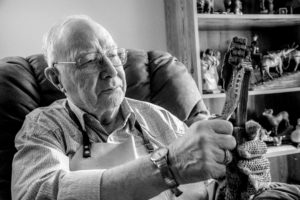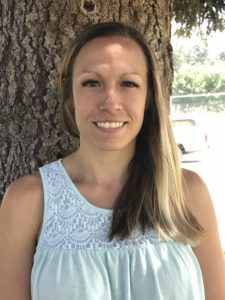Life Plan Communities come in a variety of sizes, pricepoints, financial models, and management models. One thing that sets Immanuel Lutheran Communities apart from many of our peers is that we are a nonprofit. A whitepaper from the industry organization LeadingAge notes, “Many aging services nonprofits trace their histories back 5-10 decades or more. Many were founded when a person or small group of people saw a need and mobilized to meet that need… These volunteers reached out proactively, often taking significant risks or leaps of faith, then created enough structure around the effort (often through faith communities or fraternal organizations) to assure continuation beyond meeting the immediate need or the short-term enthusiasm of individuals.”
When I read this statement, I felt like I was reading a description of Immanuel. We’ve been here at the top of Buffalo Hill in Kalispell since 1957. The organization was started when, a few years before that, a small, dedicated group of volunteers realized just how few options there were for seniors in the Flathead Valley to get the care they needed as they aged. They got together, formed a nonprofit, and built the “Lutheran Home”—the building that is now the Immanuel Skilled Care Center. As the organization’s original name indicates, most of them knew each other from church, and the Evangelical Lutheran Church of America continues as the sponsoring organization for Immanuel.
I think a lot about what makes us, as a nonprofit, different from for-profit communities in the same industry. To be fair, we don’t have a ton of competition in Montana (at the moment, we’re one of very few full-service Life Plan Communities in the state). But I think it’s still good to have an idea of what sets us apart. After all, residents at all Life Plan Communities pay for the services they receive, and surely staff at all communities care for the residents. In the end, what difference does it make whether the organization exists to turn a profit?
Here’s what I think: Because we aren’t trying to make much money over and above our operating expenses, we have the luxury of focusing on people and their needs. When we need more resources to strengthen our organization, we can turn to philanthropy instead of simply increasing prices or limiting staff wages. That’s largely why we have a foundation! We also exist solely to meet a need in our community. While we of course need to be financially solvent, we have the luxury of putting the needs of our aging neighbors ahead of any organizational need to turn a profit.
That means that when we’re considering what new services to add, we study the market less with the intent of figuring out what will yield the highest financial return but with the intent of discovering what will most benefit the people around us. With the Villas project and the recent Retreat expansion, we responded to needs for additional independent living apartments and short-term rehabilitation rooms. As we look to the future, we see needs for Medicaid-eligible dementia care, which by definition produces less revenue than almost anything else we could build. We want to build it because we care about seniors, including those with less ability to pay.
As a Foundation supporter, you play a critical role in our nonprofit success. Thank you for your interest in Immanuel—we wouldn’t be where we are without people like you.


 Today, I’d like to introduce you to Clyde Pederson, the first of many Passions Project participants you’ll be meeting over the coming months. Clyde’s passion is woodcarving. If you look around the Buffalo Hill Terrace apartment he shares with his wife, Jeanine, you’ll see everything from bark houses like the one pictured above to whimsical carvings of mucus (yes, mucus).
Today, I’d like to introduce you to Clyde Pederson, the first of many Passions Project participants you’ll be meeting over the coming months. Clyde’s passion is woodcarving. If you look around the Buffalo Hill Terrace apartment he shares with his wife, Jeanine, you’ll see everything from bark houses like the one pictured above to whimsical carvings of mucus (yes, mucus). When Megan Krupp moved with her family to the Flathead Valley in 2016, she had her sights set on a nursing career. She had been staying home with her three children, but family circumstances meant she needed to go back to work, so she knew she needed a job that would make going back to school as easy as possible. Nursing was a natural fit; she loves helping people and forming relationships. A spot in Immanuel’s in-house CNA class seemed like the perfect way to get started on her new dream.
When Megan Krupp moved with her family to the Flathead Valley in 2016, she had her sights set on a nursing career. She had been staying home with her three children, but family circumstances meant she needed to go back to work, so she knew she needed a job that would make going back to school as easy as possible. Nursing was a natural fit; she loves helping people and forming relationships. A spot in Immanuel’s in-house CNA class seemed like the perfect way to get started on her new dream.